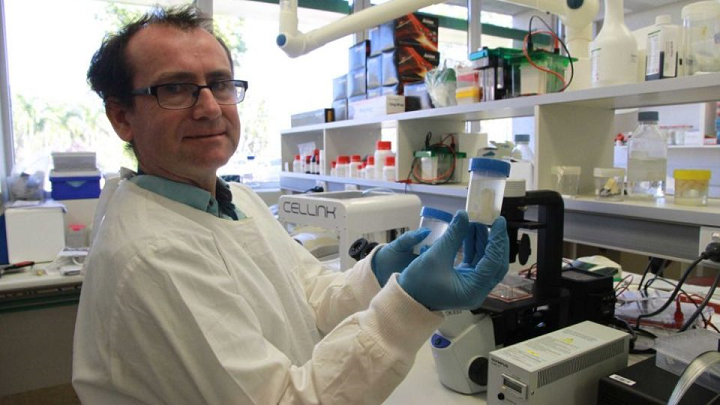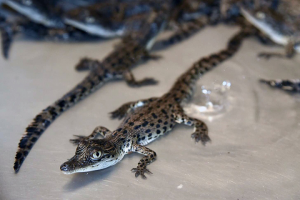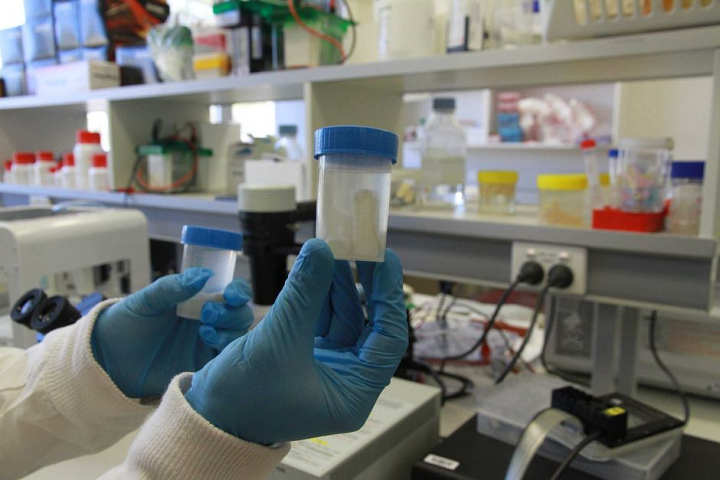Arthroscopic surgery is a minimally invasive procedure, where the cartilage of a person’s damaged joint is examined and treated with an arthroscope – an endoscope inserted into the damaged joint through a small incision. But just because it’s minimally invasive doesn’t mean that it’s not still painful, with a potentially long recovery time. But now, a microbiologist in central Queensland is using 3D printing, human stem cells, and crocodile cartilage to find a new way to treat arthritis and joint injuries.
Dr. Pardraig Strappe explained, “We’re looking at a new type of process.
“What we’re looking for is a long-term repair to the cartilage so people can return to work and to sport much faster and they don’t have the long-term effects of inflamed joints.”
Together with a small team of researchers at CQUniversity, Dr. Strappe is developing a process that will extract growth factors from crocodile cartilage, as well as remove the proteins that set off a human immune response. One day, this process could be used to successfully turn human stem cells into cartilage.
We’ve seen cartilage tissue created before by 3D printing human stem cells, but it is still tricky to achieve. Dr. Strappe was inspired by a CSIRO study from over ten years ago, which ranked the levels of growth-promoting proteoglycan in the cartilage of various species…and crocodiles were at the top, with rib cage cartilage-rich in this protein.Dr. Strappe said, “That gives us a soup or a glue that might promote our own adult stem cells, stem cells we take from fat tissue or bone marrow, to become cartilage.
“We hope that might promote cartilage repair, which is a big challenge and becoming more so in elderly populations.”
Dr. Strappe said, “A crocodile has very big articulating joints so it needs a lot of cartilage to maintain that movement.”
A year and a half ago, Dr. Strappe moved from Charles Sturt University to CQ University’s Rockhampton campus, and soon ended up at the Koorana Crocodile Farm, which produces croc meat for the market in Australia and exports skins to fashion houses in Italy. The farm also works hard to achieve a zero waste policy.
Dr. Strappe explained, “They are very innovative in looking at new ways to use waste products, which essentially for them is cartilage.
“This is certainly a new opportunity to do this decellularisation approach with a fairly unique source.”
Adam Lever, the abattoir manager for Koorana Crocodile Farm, says that the farm has a “mutually beneficial” relationship with Dr. Strappe and his research team.
Lever said, “The only thing that we throw out in our abattoir at the end of the day is the paper towel we wipe our hands on.
“The bones are sold to a dog food manufacturing company, the same with the guts and internals, we have tail tips that are sold and feet that are sold for back scratchers and stubby coolers.
“We are delving head first into anything that we can to do with crocodile by-product.”
This leaves the leftover cartilage for Dr. Strappe’s research purposes; he specifically used cartilage from young crocodiles’ throat areas for his testing.
Dr. Strappe said, “Any croc cartilage that’s left, I try to collect as fresh as I can or it can be frozen.
“I’m out there pretty regularly collecting parts.”
Once he attains the croc cartilage and extracts the growth factors and proteins, Dr. Strappe adds what’s left to adult stem cells. Then, a CELLINK 3D bioprinter is used to fabricate cartilage explants, which can hopefully be implanted or injected in damaged human joints someday.
Dr. Strappe explained, “If you have a traumatic injury to the articulating joint, particularly the knee, you are left with a crack or a fissure and that doesn’t have an endogenous repair system because cartilage doesn’t have a blood supply.
“You are left with a hole that needs to be filled in.
“With 3D printing we can mimic that hole or that gap so potentially the orthopaedic surgeon could fill in that gap with a little cartilage explant to repair the joint.”
According to Dr. Strappe, his team is focused right now on maintaining its project funding, as well as trying to drum up enough interest in biotechnology companies so that the cartilage 3D printing technology can one day be developed and marketed.
Discuss this story and other 3D printing topics at 3DPrintBoard.com or share your thoughts below.
[Images: ABC, unless otherwise noted]Subscribe to Our Email Newsletter
Stay up-to-date on all the latest news from the 3D printing industry and receive information and offers from third party vendors.
You May Also Like
NSF Awards Kentucky $1M for Advanced Manufacturing
The National Science Foundation has awarded a $1 million grant to the University of Louisville for the Advancing Manufacturing and Building Construction Technologies (NSF AMT) project. This initiative is part...
3D Printing News Briefs, May 11, 2024: 3D Printed Stent, Tower, Sculptures, & More
We’re starting off with medical research in today’s 3D Printing News Briefs, as researchers in Korea used CT images and 3D printing to fabricate an educational simulator for a mastoidectomy....
3D Printing Unpeeled: Wind Turbines, Probiotics and Lenses
TPI Composites, ORNL and Ingersoll Rand are working to make wind turbine tooling segments that can be 18.3 meters long. These elements also include resistive wires that help keep the...
Tethon 3D Releases Cost-effective Bioprinter
Tethon 3D, known for its ceramic-loaded DLP materials, custom resins, and DLP 3D printers, has recently released a bioprinter. Vat polymerization printers like DLP systems have been widely used by...



































